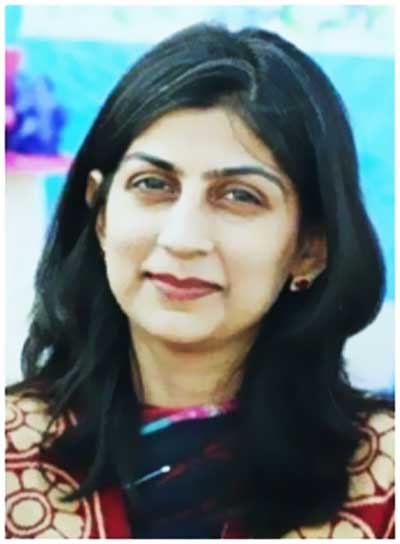
A land coming to life
Gul Sher, son of Muhammad Jan, a resident of Village Attal Sharif, Tehsil Kulachi, District Dera Isamil Khan of Pakistan, a forty years old progressive livestock farmer, living in a joint family of fifty persons, including his six brothers, is committed to agricultural and livestock farming, which his primary source of income at the Gomal Zam Dam Command Area, Pakistan.
Gul Sher was visited for an informal research-based interview at his well-planned and lush green farmhouse in Attal Sharif (located within the boundaries of the GZD Command Area), on January 11, 2022. Upon enquiring about his entire journey of livestock farming, he admitted that just a couple of years ago, livestock farming were not even close to what it is today. He stated that just like the other Command Area farmers, initially, he raised only a handful of livestock animals (a few numbers of cattle and goats). Both the milk and the meat production were considerably low and there were times when they even had to rather purchase milk from other sources in order to fulfill even their personal daily consumption.
The animals were emaciated and often remained in diseased conditions due to the poor nutritional quality of fodder. Neither were there any veterinary medical facilities, nor did they have sufficient finances to overcome the identified areas for development. There was immense lack of awareness regarding caretaking of livestock. Thus, livestock farming turned out to be a huge financial burden and a stressful means of financial loss.
Gul Sher also claimed those two years ago, there were no professional Veterinary care/medical centers available in their deprived and underdeveloped area, resulting in unfortunate livestock fatalities. The absence of professional training workshops for relevant issues regarding livestock handling or trainings for maximizing production, or any other facilitating helpline, made matters worse. Owing to those unfavorable circumstances the livestock farmers faced demoralizing challenges at initial stages.
However, pleasantly enough, upon making comparison with the present status and development of livestock farming, Gul Sher merrily elaborated the currently flourishing enterprise of livestock farming with professional progression. The livestock production at his farmhouse alone had boosted a whooping approximation of 200% after three Mass Vaccination & De-Worming Campaigns, Wanda Distribution, Small Ruminants Distribution, & Breed Improvement Interventionism. Not only had the milk and meat production increased dramatically, but also their livestock population. Plus, the now frequent visits by the veterinary and livestock professionals, their professional orientations, awareness sessions and trainings about livestock farming and livestock management, Gul Sher is a now well-aware, well-informed and much more competent professional livestock farmer; reaping fruits of his invested resources to the fullest with confidence and gratifying contentment.
He feels much more well equipped with the right kind of information helping him overcome both the predicted and the unforeseen dilemmas pertaining cattle farming, such as the SOPs of handling contagious outbreaks, routine vaccinations, dietary plans for nutritional benefits of the livestock in order to enhance milk and meat production, etc.
Gul Sher claimed that now the animals have a much healthier and longer life, and due to timely de-worming, their animal’s food conversion ratio had improved tremendously. Due to use of dynamic range of nutrient dense wanda cattle feed, their lactating cattle showed rapid milk production as well as rapid gain in weight, resulting in maximizing meat production.
The cost effectiveness and satisfying profits attained from recent cattle farming have proved to be flourishingly promising and encouraging enough, due to the latest support and developmental programs in the region of Gomal Zam Dam, with sweeping statistical boost to the economic and financial outcomes from the promising enterprise of cattle farming.
Gul Sher presented his records showing the mass graphical spikes in the gross productions of both livestock and their milk/meat production. The increase in his personal capacity and capability of raising and handling ruminants has increased for small ones from just a dozen to a magnificently enlarged group of a hundred and fifty and of large cattle has risen from ten to forty. The milk production from his personal farm of small ruminants from 4-5 liters in the past to a 80 to 100 liter of milk per day. Similarly, instead of 8-10 liters of milk attained from large ruminants has increased to 140-150 liters of milk per day.
The average weight of each animal has literally DOULED, resulting in the price of just the smaller animals soaring from a mere PKR 7-8,000 to a rocketing PKR 35-50,000, and for larger cattle, the unbelievable hike in the market price of PKR 30-40,000 to a rewarding upgrade of PKR 80-100,000. Such are the much-needed success stories in the underdeveloped parts of the globe, bringing warmth and facilitation to the withering planet of gradually draining natural resources.
The farmers are now all geared up to learn and polish modern marketing skills in order to enhance the competitiveness of their growing business. They vow absolute commitment to become great livestock farmers of the future.
All of this was possible because of the precious access to water through the Gomal Zam Dam. Gul Sher’s life has taken a triphant turn due to the fortunate turn of events after his land was irrigated by the availability of the large water reservoir which fertilized his soil, and timely professional support that was much needed in order to attain maximum benefits from the possibilities generated thereafter. He is now constructing a new house for his family, with a larger animal shed, looking forward to a better-quality of life, health and education for his family and offspring. Seeking higher horizons for the upcoming generations with a securer financial future, anticipating a new era of prosperity in the region.






